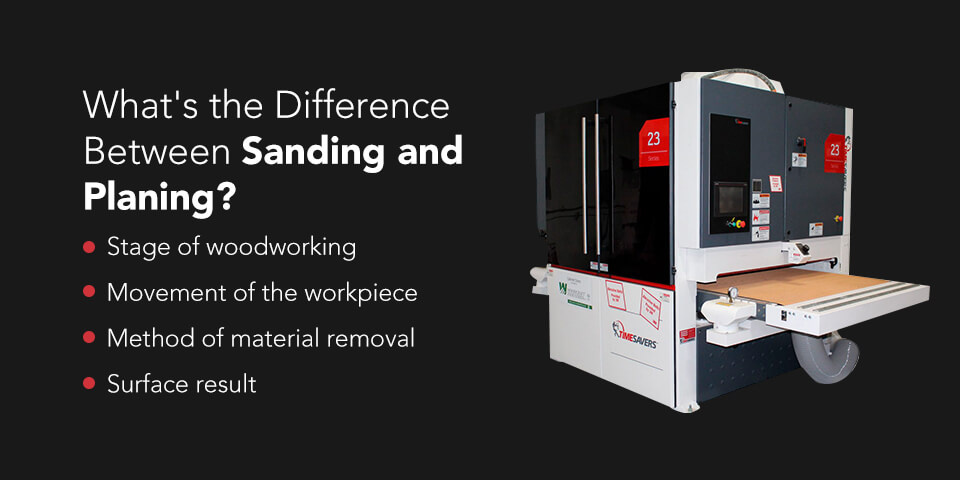Industrial Planing vs. Sanding
Planing and sanding are two important woodworking methods, but what are the main differences between them? Compare the two processes below to learn more.
What Is Sanding?
Sanding is a process that involves using an abrasive material to remove small irregularities from wood to create a smoother finish. Sanding tools include both manual, including sandpaper and sanding blocks, and automatic tools, such as electric or pneumatic sanders. If you are looking to remove minor details and protrusions, sanding is the best choice. Automatic tools also provide a more uniform, perfect result than manual sanding paper or blocks.
What Is Planing?
Planing involves using blades to remove long chips from a piece of wood’s surface. This process results in a more even, flat wood surface with clearly defined edges. Planing usually occurs in the early stages of wood preparation and reveals a clear surface where the surrounding texture is clear.

What’s the Difference Between Sanding and Planing?
The primary distinction between sanding and planing lies in the tools used — sanding uses an abrasive, while planing involves the use of blades. Other differences include:
- Stage of woodworking: A major difference between sanding and planing is the stage of woodworking they occur. Planing is often performed in the earliest stages to prepare the surface, while sanding happens at the final stage to finish and smooth the surface.
- Movement of the workpiece: In planing, the workpiece often works one or two ways. However, when sanding, it’s important to always go with the grain of the wood to avoid scratching the surface.
- Method of material removal: Because of the different processes and goals, planing and sanding also have different methods of removing material. With sanding, the material waste results as dust, while planing results in longer wood chips.
- Surface result: Since planing happens in the beginning stages of woodworking, the surface result is rougher than sanding, which seeks to smooth and perfect a surface at the final stage of a woodworking project.
Which One Is Right for Me?
Deciding whether to sand or plane depends entirely on your desired result. If you need to even or flatten a wood surface to prepare it for other work, then planing is the right choice. If you are at the end stages of your project and want to smooth your work surface to reduce imperfections, then sanding is the right choice.
Browse Our Sanding Machines
If you’re working with wood, you need an efficient and effective sanding solution. Timesavers has over 70 years of experience developing and perfecting our woodworking machines. Find woodworking equipment and machines that enhance your productivity and efficiency or contact our team to request a quote.
